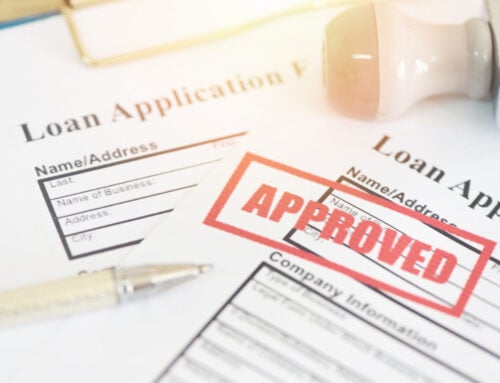The home refinance process is like pressing the reset button on your mortgage, but what exactly does this entail, and when should you consider it? For homeowners and first-time buyers, comprehending the refinancing process is critical. Refinancing is the process of replacing your existing mortgage with a new one, typically with different terms. It’s an opportunity for homeowners to adjust their financial obligations in line with current economic landscapes or personal financial goals.
Why should you, as a homeowner, be savvy about refinancing? Because under the right circumstances, it can substantially affect your fiscal health and peace of mind. We will delve into the intricacies of refinancing, elucidating benefits, options, and necessary procedures, all designed to help you make informed financial decisions.
Benefits of Refinancing
Refinancing can lead to a lower interest rate, which is one of the most common reasons homeowners choose to refinance. A reduced rate can signify lower monthly payments, resulting in significant savings over the life of the loan. Additionally, refinancing can allow homeowners to convert their adjustable-rate mortgage (ARM) to a fixed-rate mortgage, offering them the stability of a consistent monthly payment.
Another benefit is the opportunity to tap into the home’s equity for large expenses, such as home renovations, education costs, or debt consolidation. Moreover, refinancing can also shorten the term of the mortgage, enabling homeowners to pay off their home quicker and reduce the amount of interest paid in the long run.
Types of Refinancing Options
- Rate and Term Refinance: This involves changing the interest rate, the term, or both the rate and term of your existing mortgage without changing the principal balance. This option is especially attractive when interest rates decline, allowing homeowners to lock in at a lower rate and potentially restructure the loan duration—either to pay it off quicker with a shorter term or to extend the term for lower monthly payments. This refinancing type does not provide cash back but is geared towards achieving more favorable loan conditions to suit the homeowner’s current financial situation and goals.
- Cash-out Refinance: Stands as a dynamic refinancing option for homeowners looking to leverage their property’s equity, translating it into cash. This process involves refinancing for a higher amount than what is owed on the existing mortgage and receiving the difference in cash. This method is particularly advantageous for those looking to fund major expenditures, invest in property improvement, or consolidate high-interest debts. However, it’s important to carefully consider the potential increase in the loan term and the total interest paid over time, ensuring that the immediate benefits align harmoniously with long-term financial aspirations.
- Streamline Refinance: This is a simplified refinancing option for homeowners who wish to reduce their interest rate and monthly payments without an extensive qualification process. Often associated with government-backed loan programs, it typically requires less paperwork, no appraisal, and a faster turnaround time. This type of refinancing is ideal for those who are looking for a quick and less complex way to improve their mortgage terms, usually without cash out. Homeowners can benefit from this option if they’ve maintained a good payment history and meet specific requirements, leading to a more manageable and cost-effective mortgage.
Home Refinance Process
Refinancing your mortgage can be broken down into several key steps designed to ensure that you make the right choice for your financial situation. Here is an overview of the process:
- Goal Assessment: Whether it’s lowering monthly mortgage payments, shortening the loan term, consolidating debt, or accessing home equity for large purchases, understanding these objectives helps to determine the most beneficial refinancing path. By closely examining their long-term financial plans and current economic status, homeowners can align their refinancing strategy with their overall financial targets, ensuring that they ultimately support their personal wealth-building journey.
- Financial Review: Evaluate your financial health by reviewing your credit score, current mortgage details, debt-to-income ratio, and overall financial stability. This will influence the loan terms that lenders will offer you.
- Rate Shopping: Investigate interest rates from multiple lenders to find the best deal. Consider various loan terms and costs associated with refinancing to ensure you are getting a competitive rate.
- Application Submission: Once you’ve chosen a lender, submit your refinancing application along with the necessary financial documentation, such as pay stubs, tax returns, and information about current debts.
- Loan Processing: The lender will review your application to verify your financial information. This phase may include a home appraisal to assess the current value of your property.
- Underwriting: Your loan then moves to the underwriting stage, where the lender confirms all the details and ensures all refinancing requirements are met.
- Closing: If the loan is approved, you’ll proceed to the closing phase, where you’ll review and sign the final loan documents. Keep in mind that this is when you’ll pay any closing costs, which can be rolled into the loan balance or paid upfront.
- Post-Closing: After closing, there is a brief waiting period known as the “right of rescission” that allows you to cancel the refinance if needed. Once this period passes, the new mortgage takes effect, and you begin making payments according to the new loan terms.
It’s critical to fully comprehend each step of the refinancing process and to work closely with your lender to ensure all your questions are answered and any issues are promptly addressed. This meticulous approach will foster a refinancing experience that aligns with your financial goals and provides the benefits you seek from the new terms of your mortgage.
Considerations and Challenges
When considering refinancing, homeowners should weigh the potential downsides and challenges that come with restructuring a mortgage. Early payoff penalties, additional fees, and closing costs can diminish the financial gain from a lower interest rate or reduced monthly payments. It’s essential to calculate the break-even point – when the costs of refinancing are offset by savings – to ensure refinancing is beneficial in the long term.
Homeowners should also recognize that extending the life of the loan may lead to greater interest over time, despite the allure of smaller monthly payments. Credit scores play a pivotal role as well; a less-than-ideal credit rating can impact the interest rate offered by lenders, which might nullify the benefits of refinancing. It’s imperative to thoroughly understand the terms, assess personal financial stability, and consider the market conditions before proceeding with a refinancing option.
Find Economic Comfort

Refinancing could be a strategic financial move that alters the landscape of your economic comfort, yet it demands careful thought and consideration. Remember, understanding your goals alongside economic fluctuations helps in capturing the full potential of refinancing. So, whether seeking lower monthly payments, consolidating debt, or simply reaping the benefits of improved personal financial standing, exploring home refinance options may pave the way to a brighter fiscal future.
Navigate the Home Refinance Process With UCM
For expert advice on how to navigate your refinancing options to best suit your financial outlook, contact our team of experts. At Union Capital Mortgage, we’re dedicated to helping you find your path to economic comfort and stability. Call us today at (440) 585-5626 or visit our website to discuss your refinancing needs and start your journey towards a fiscally prosperous tomorrow.
Lets Talk!
Ask us anything – our mortgage loan officers are here to guide you towards the best loan for your lifestyle and financial goals. Give us a call today at 440-585-5626, or fill out our contact form below!






